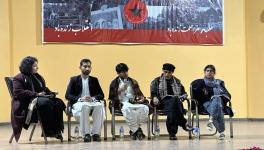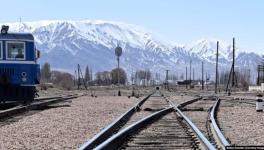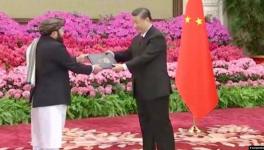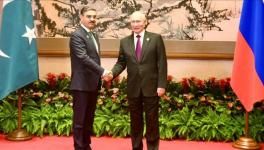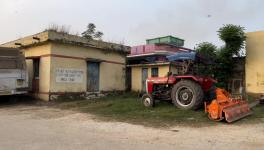56-inch Chest Thumping Backfires on Hot Pursuit
The Modi government has managed to turn its “hot pursuit” into Myanmar of the NCS (Khaplang) group insurgents from a small victory to a total fiasco. It is now not only back-tracking over its Myanmar claims, but toning down its rhetoric against Pakistan as well. Nevertheless, some part of the rhetoric still sticks, that this was a “first” by India in its “new” security strategy of hot pursuit and the “lessons” for Pakistan. This is in spite of the military and other knowledgable commentators stating that this is by no means a first and making clear the difference in entering a friendly Myanmar, with whom we have a security agreement, and entering a nuclear armed Pakistan, with a relatively “hot” and well defended border.
Myanmar was probably informed about the operations, had given its green signal but expected that it would be treated as it was always in the past: both sides would talk about operations “at the border” and not in the other's territory. This was what had happened in earlier instances and even the military, in its public statements, talked only about actions on the India Myanmar border. It was the desire of the Modi government to take public credit for a non-existent first that made public that India had crossed the border, putting Myanmar in a spot. Not surprisingly, it has made its strong displeasure known to the Indian Ambassador and has also indicated its adverse impact on similar actions in the future.
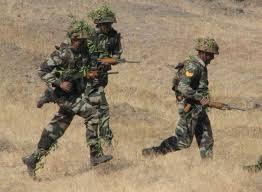
Image Courtesy: hi.wikipedia.org
It is now clear that the chest thumping, started by Rajyavardhan Singh Rathore, Minister of State for Information and Broadcasting (I&B), was not an isolated instance of a motor mouth minister, but was cleared at the highest level of the government. It was followed up by various other ministers, Prakash Javadekar, Nitin Gadkari and even Manohar Parikkar, the Defence Minister, adding to the din and notching up the aggressive rhetoric of “repeating this on the western border”, and it being a “warning” to Pakistan. This series of statements follows up on Parikkar's earlier statement of “neutralising” terrorists by “using” terrorists, accepting at the level of a Defence Minister that India was contemplating terrorism as an instrument of state policy. All in all, a remarkable series of self-goals on delicate matters of international relations, based on a desire to do some jingoistic chest thumping.
So why did the ministers and the entire BJP cheerleading brigade go on this media overdrive?
The attack by NSC (Khaplang) on the Indian Army personnel in which 20 were killed was a huge setback for Modi's “Iron Man” image. Modi government's leaks to the media on hot pursuit has to be seen as a public relations exercise to restore Modi's image. No questions on why the Naga insurgency has broken out again and how did the Army lose so many men in this attack. Instead, the hype in the media was of a leader who is taking “bold” actions and breaking new ground.
We will not go into how many insurgents did the Indian Army kill or injure, nor about the botched publicity in which 2013 photos were given out as publicity material to the media. These are important but not as critical as, i) what is indeed India's policy on pursuit and has it changed ii) what is happening in Nagaland, Manipur and other areas neighbouring the 1643 km India Myanmar border.
Is it the first time that Indian security forces have undertaken “hot pursuit”? Sources indicate that India has done this many times earlier, both in Myanmar and in Bhutan. In Myanmar, the 2010 Security Agreement, reached between Manmohan Singh government and Myanmar's military ruler, Senior General Than Shwe, had agreed that either side would could cross the border if required, and if they had information regarding terrorists using the other country's territory. Former army vice-chief Lt Gen ML Naidu confirmed to Times of India that India has a "Hot Pursuit" agreement with Myanmar. Other reports indicate of similar action in 1995, 2001 and 2006; the 2001 action was inside India while the 1995 and 2006 actions were inside Myanmar. Lt. Gen. HS Panang has also confirmed that this is not a first as claimed by Rathore and co., but the Indian Army has carried out such covert actions in the past as well.
The revival of the Naga insurgency has ominous portents. The NSCN (Khaplang) has broken its 14-year long truce accord with India and is among the nine groups that have come together in a United National Liberation Front of West South East Asia (UNLFWSEA). This also includes the ULFA faction led by Paresh Baruah. The attack on the Army on June 4 appears to be their way of announcing this front.
Khaplang is a Burmese Naga and controls some areas on the Myanmar side of the border. Right now, he is in negotiations with the Burmese government to end his insurgency in Myanmar. The last thing India needs at this moment is to take Myanmar for granted and “help” Khaplang find a ready sanctuary there.
The Modi government's failure is in not taking stock of what is happening in the North-east, and believing that the insurgencies in this region is over. That is why there was no attempt to see that the talks with the Naga groups, both NSCN (Isak-Muvia) and the NSCN (Khaplang) do not fail, and preparing for what might happen if it did. The talk of a changed policy and the chest thumping machismo of hot pursuit, was an attempt to salvage glory from what is otherwise a major policy failure. It is another matter that this has also backfired badly and will probably have long term costs in terms of India's relations with Myanmar.
Disclaimer: The views expressed here are the author's personal views, and do not necessarily represent the views of Newsclick
Get the latest reports & analysis with people's perspective on Protests, movements & deep analytical videos, discussions of the current affairs in your Telegram app. Subscribe to NewsClick's Telegram channel & get Real-Time updates on stories, as they get published on our website.









